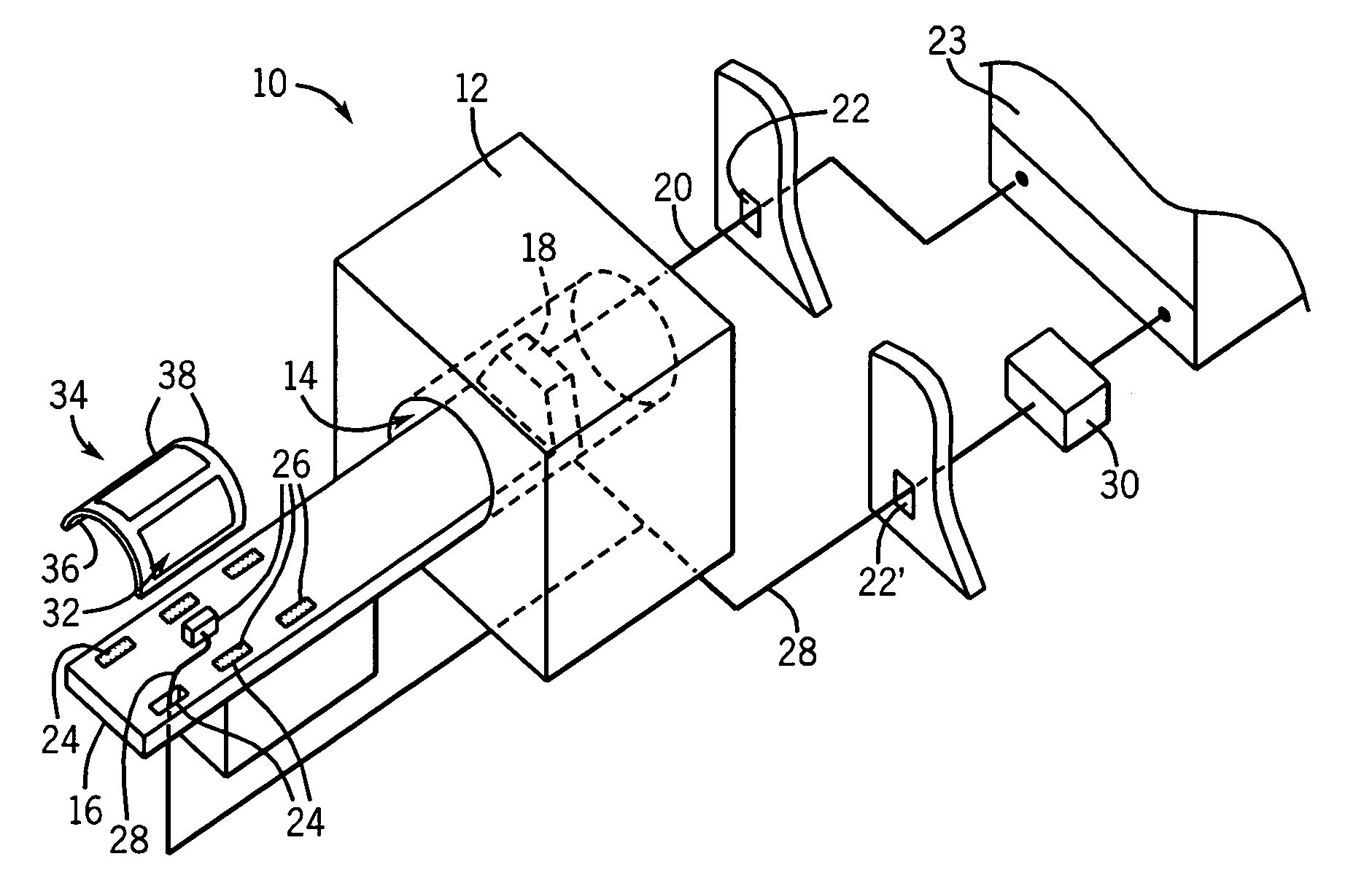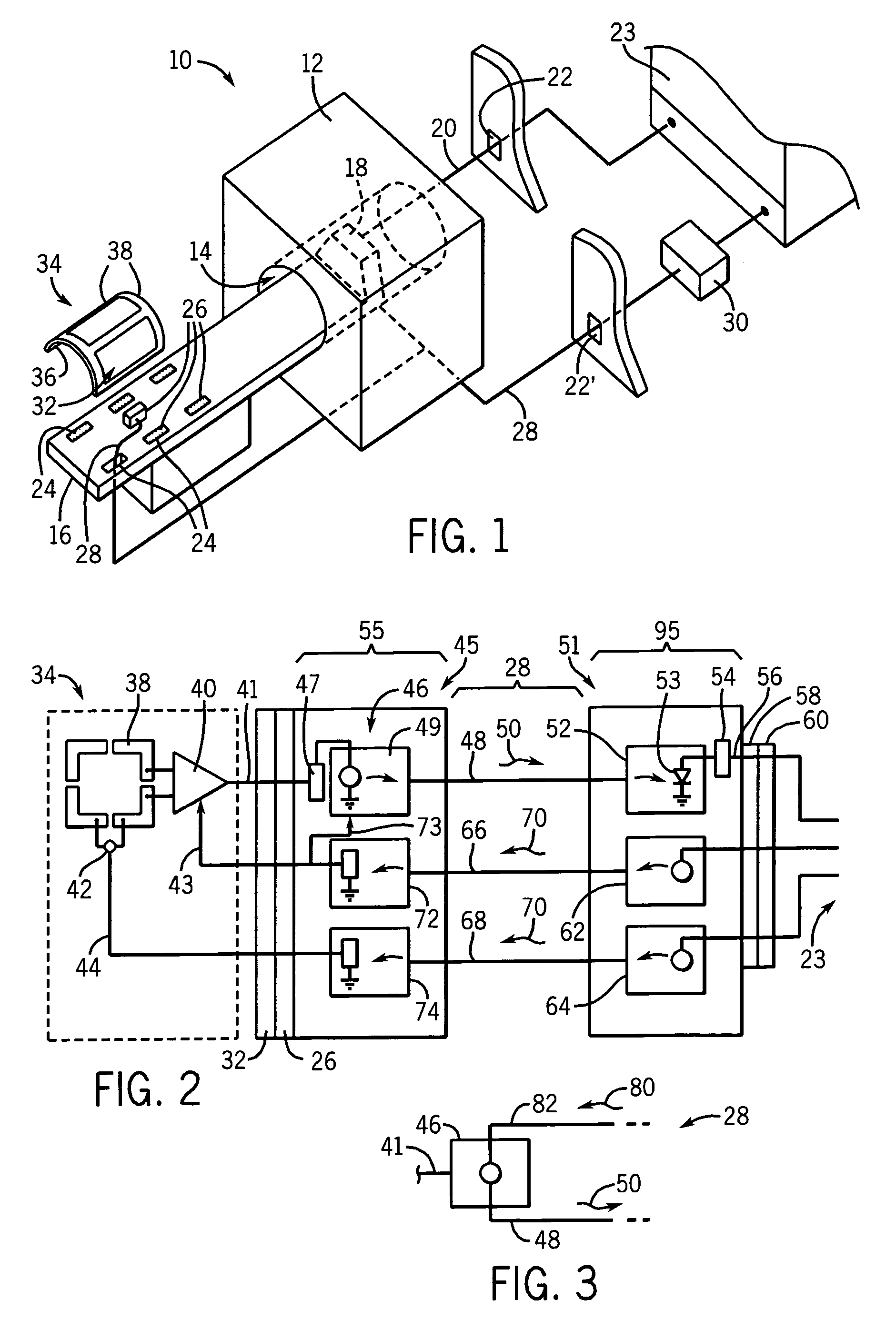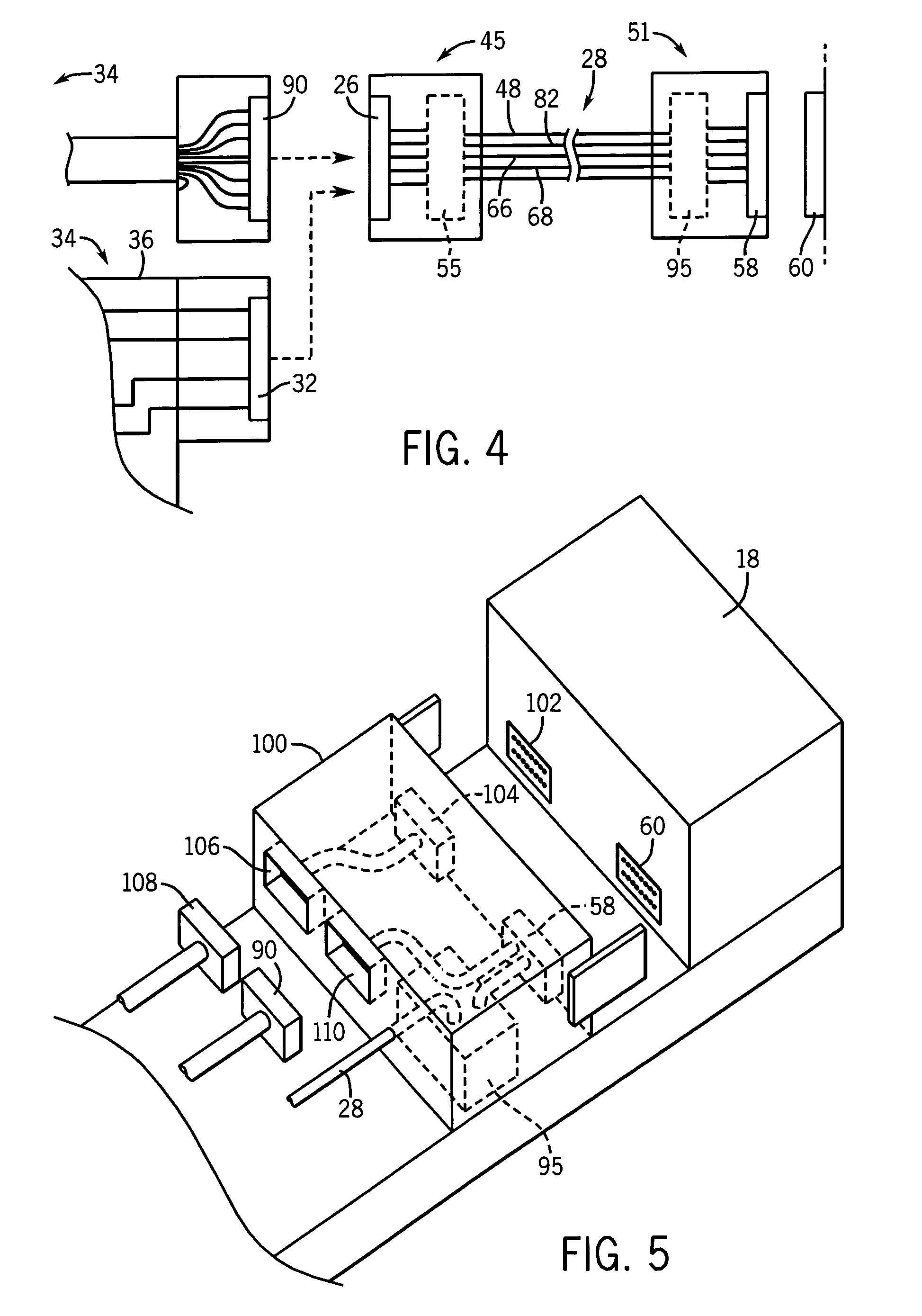Optical interface for local MRI coils
a local coil and optical interface technology, applied in the field of magnetic resonance imaging, can solve the problems of inflexibility, large shielded cables passing from the local coil to the termination box, and a difficult electrical environment of the mri machine, and achieve the effect of costing the modulation circuitry
- Summary
- Abstract
- Description
- Claims
- Application Information
AI Technical Summary
Benefits of technology
Problems solved by technology
Method used
Image
Examples
Embodiment Construction
[0032]Referring now to FIG. 1, an MRI machine 10 may include a magnet assembly 12 providing a homogenous polarizing magnetic field within a bore 14 of the magnet assembly 12.
[0033]The bore 14 may receive a patient table 16 for supporting a patient thereupon, the patient table 16 movable through the bore 14 during the examination process. The table 16 may include a termination box 18 at one end to which signals from local coils may be connected by means of connectors on the termination box 18 (not shown).
[0034]The termination box 18 communicates by means of shielded electrical cable 20 through a penetrator 22 in a shielded wall of the MRI room to an MRI processing unit 23, the latter which receives the NMR signals and reconstructs them into an image. Shielded electrical cable 20 may also carry transmit signals in the opposite direction, the transmit signals being an RF pulse transmitted to some local coils that provide transmitting as well as receiving capabilities as will be describ...
PUM
 Login to View More
Login to View More Abstract
Description
Claims
Application Information
 Login to View More
Login to View More - R&D
- Intellectual Property
- Life Sciences
- Materials
- Tech Scout
- Unparalleled Data Quality
- Higher Quality Content
- 60% Fewer Hallucinations
Browse by: Latest US Patents, China's latest patents, Technical Efficacy Thesaurus, Application Domain, Technology Topic, Popular Technical Reports.
© 2025 PatSnap. All rights reserved.Legal|Privacy policy|Modern Slavery Act Transparency Statement|Sitemap|About US| Contact US: help@patsnap.com



